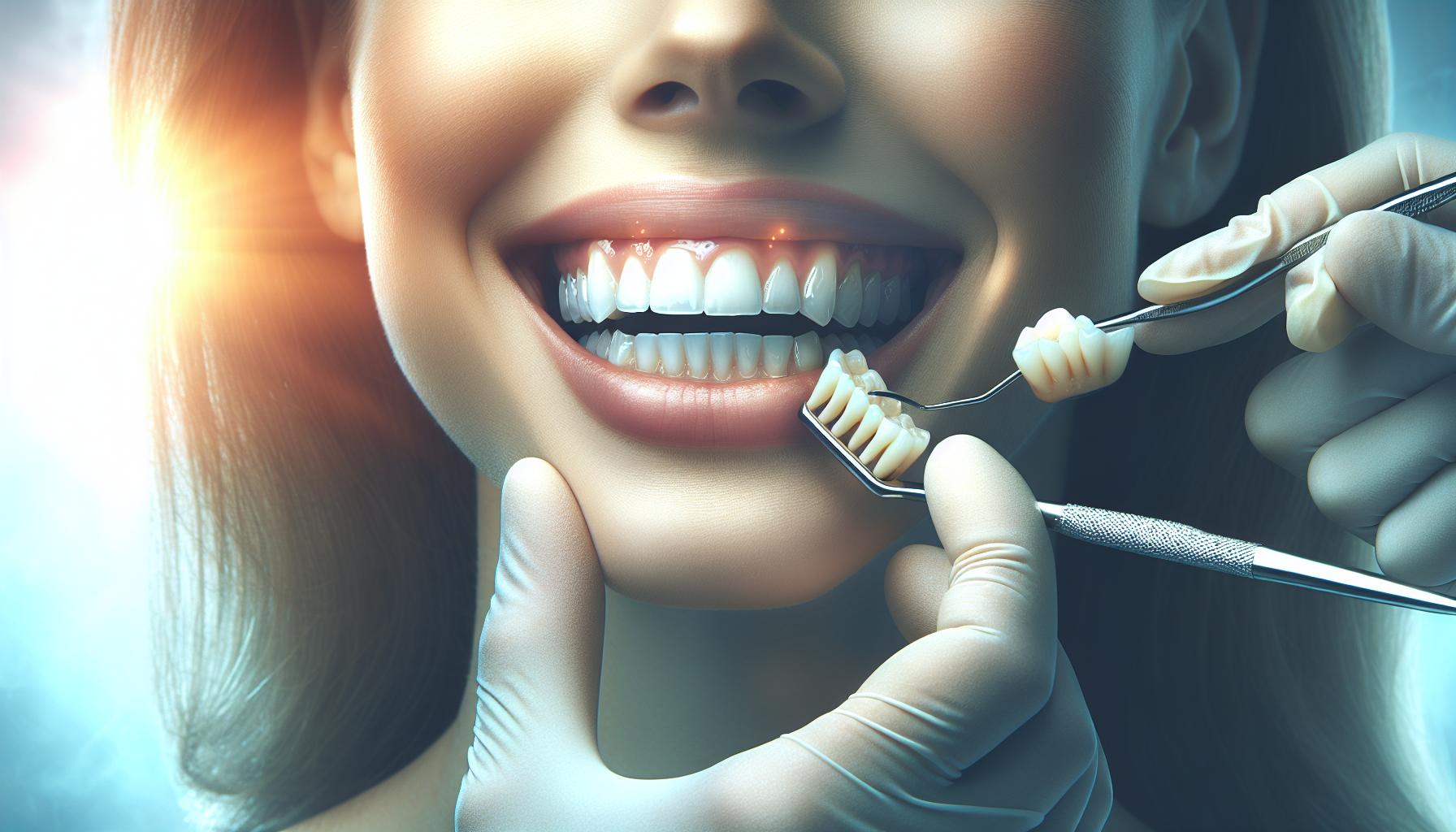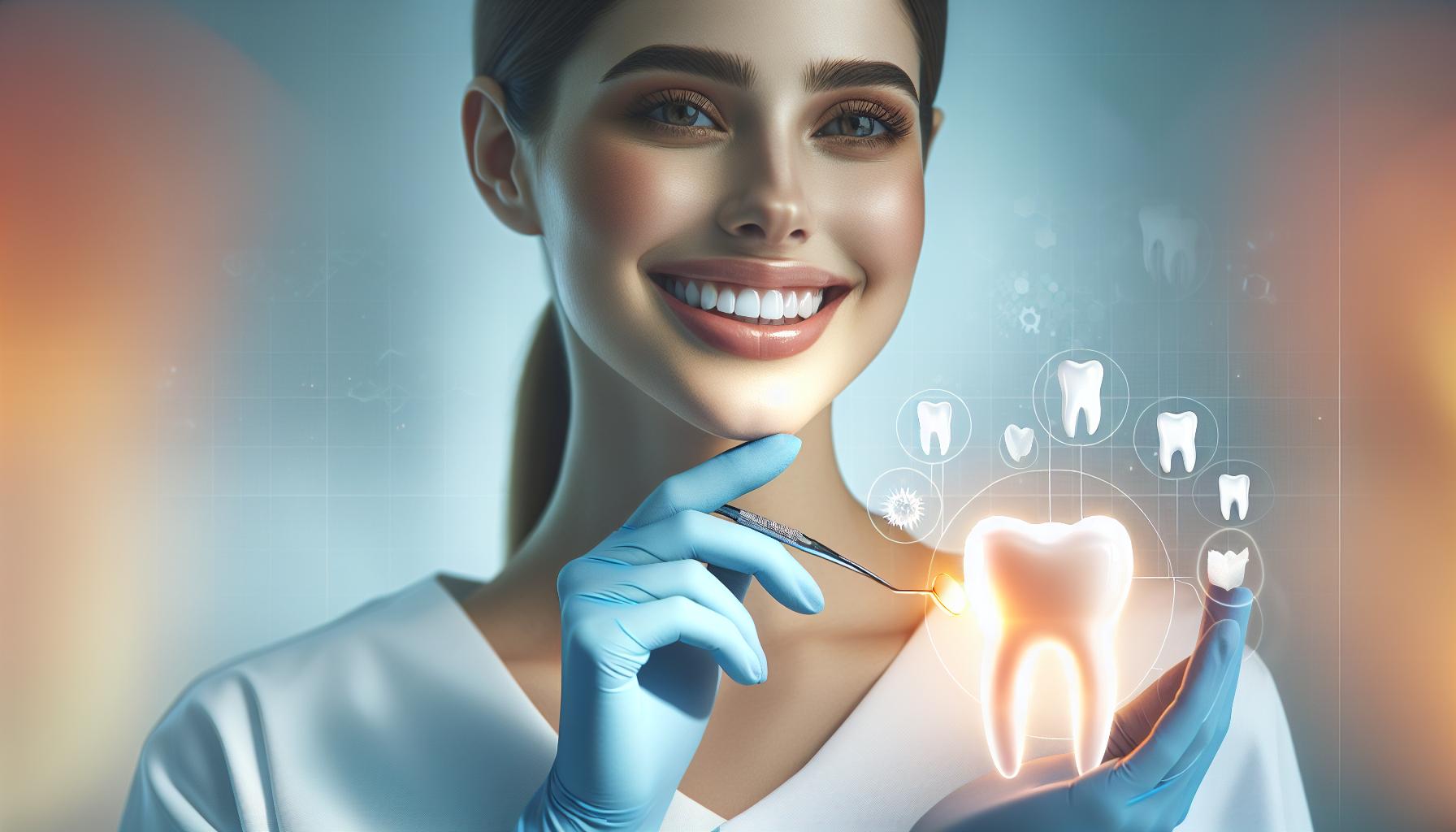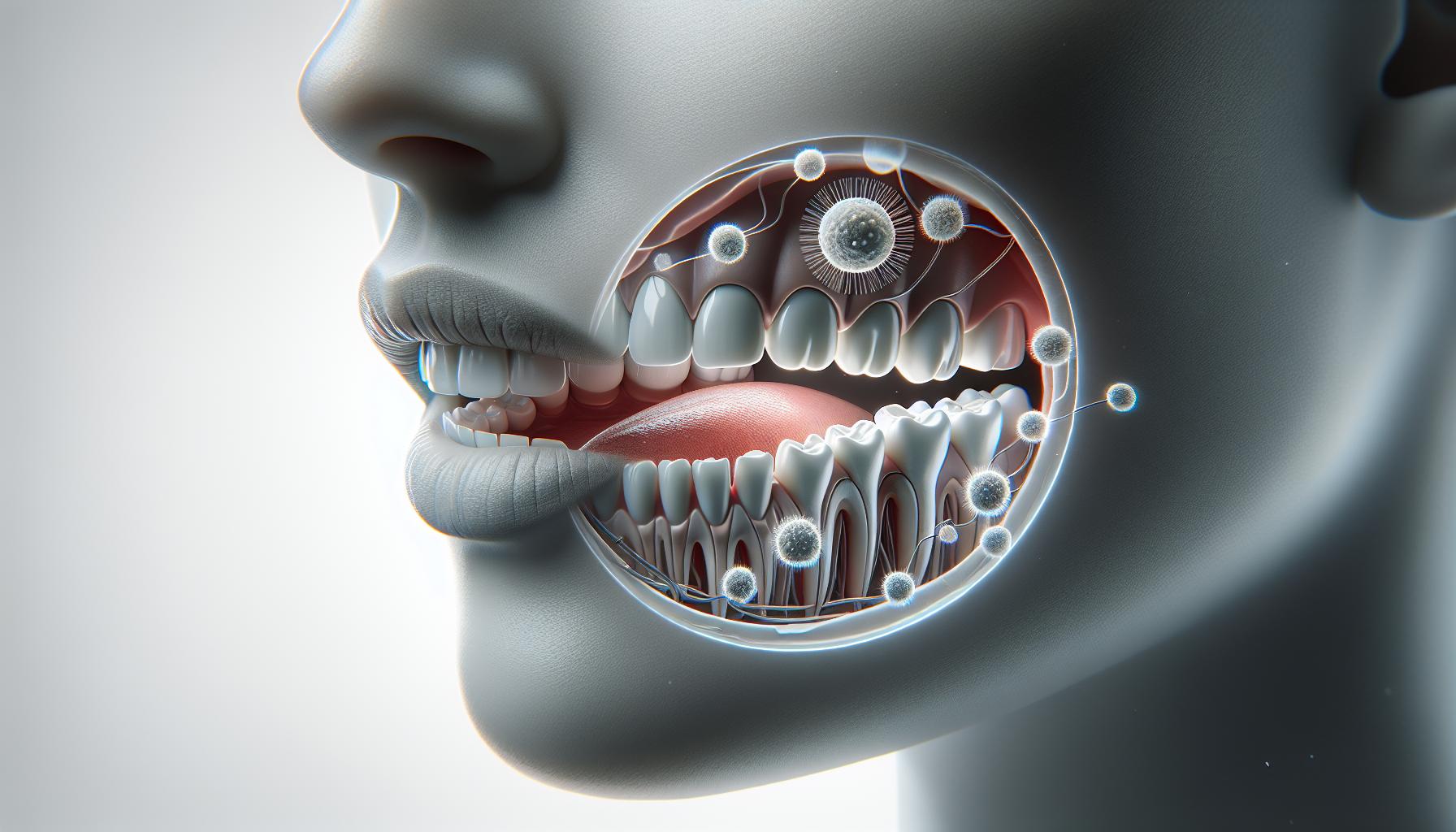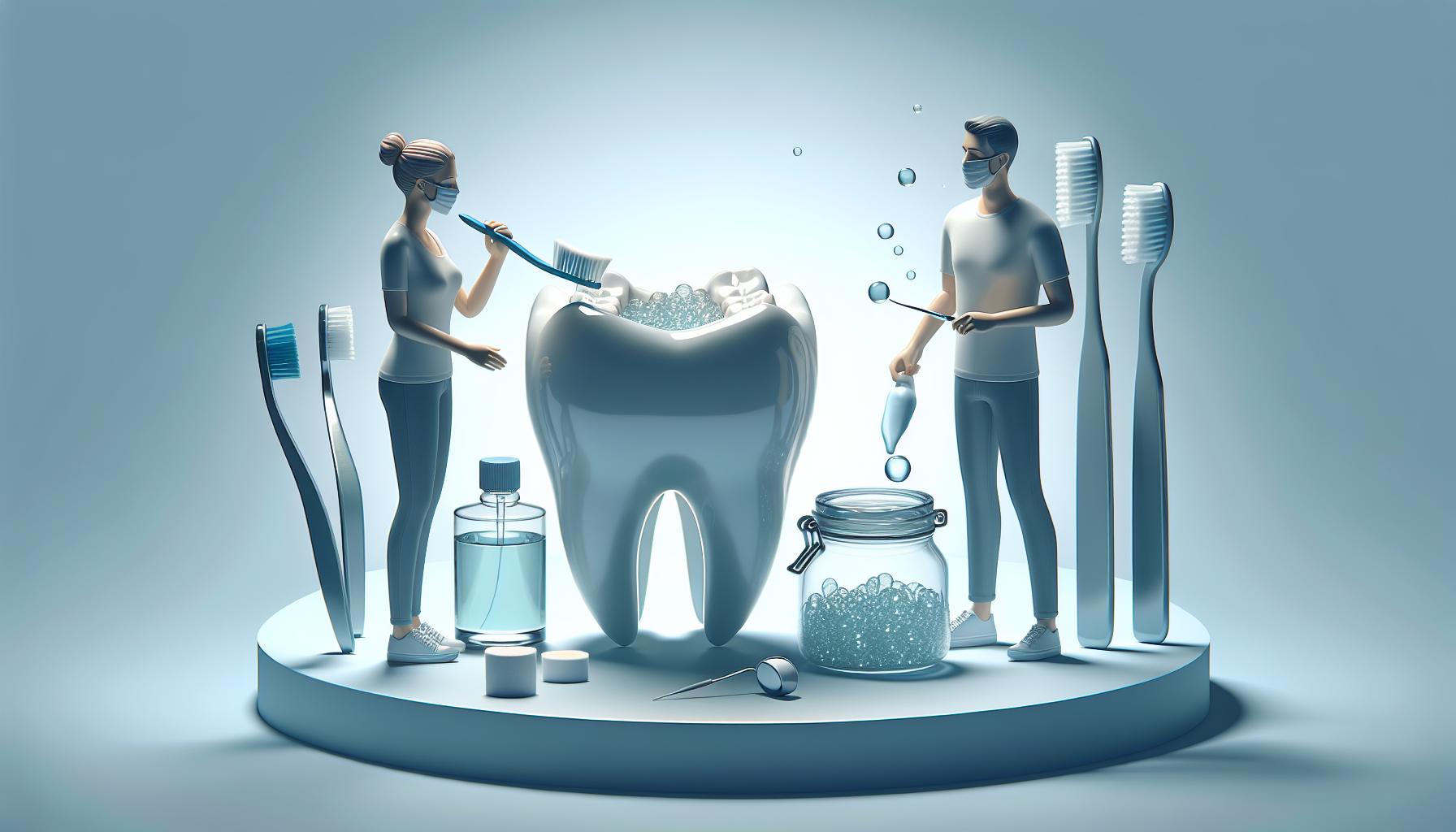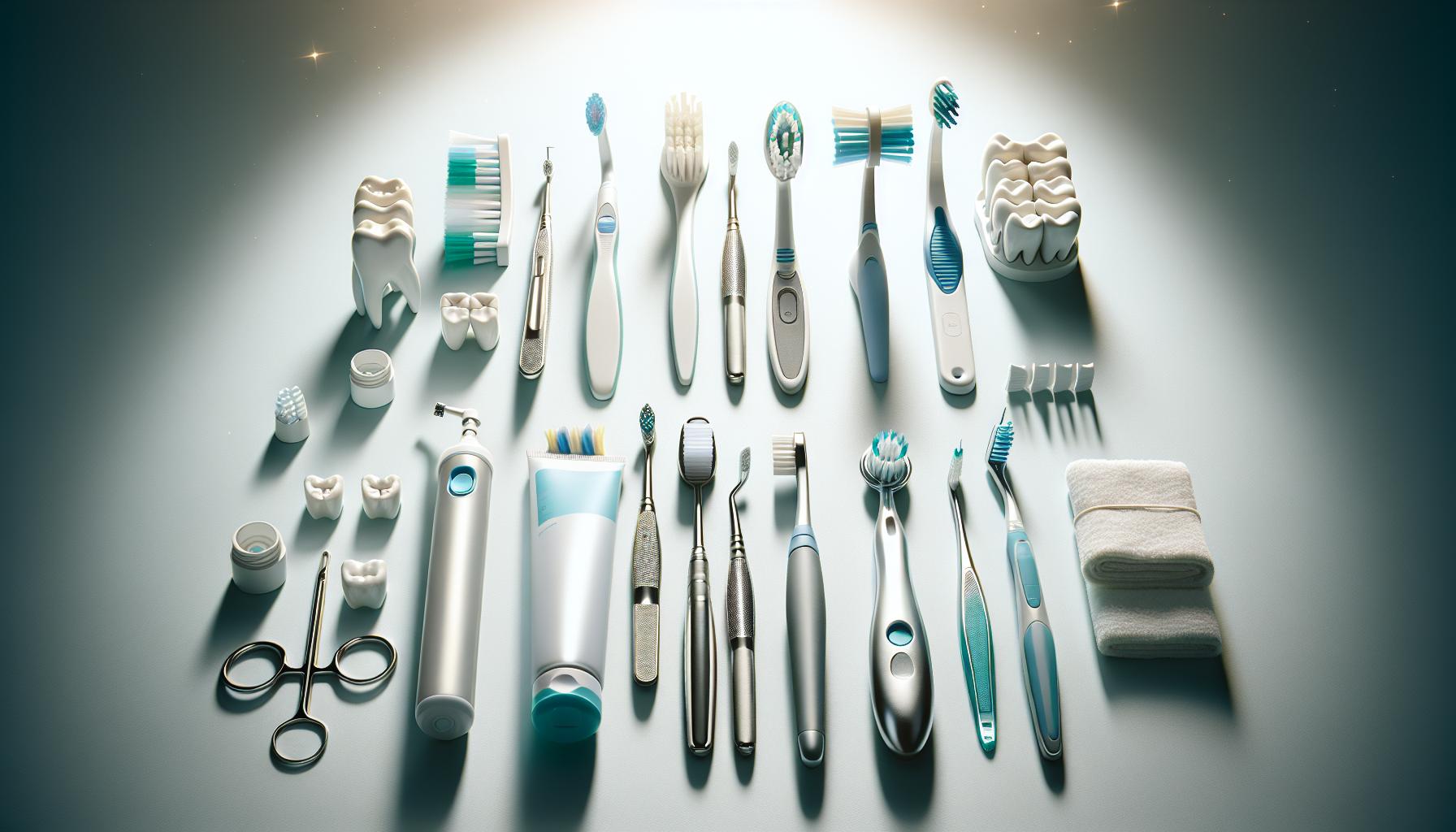Plaque buildup can lead to serious dental issues if left unchecked, but many wonder how to effectively tackle this sticky problem. Understanding proven methods to eliminate plaque not only promotes oral health but also enhances your smile’s appearance. Discover effective techniques endorsed by dentists to maintain your teeth and gums, ensuring lasting freshness and confidence.
Understanding Dental Plaque: What It Is and Why It Matters
did you know that dental plaque is a sticky film that forms on your teeth and contains thousands of bacteria? This film begins to develop as soon as you finish brushing, making effective oral hygiene essential to your dental health. If left unchecked, plaque can harden into tartar, leading to gum disease and cavities. Understanding how to manage plaque is crucial for maintaining a healthy smile and preventing more serious dental issues.
Dental plaque is primarily composed of food particles, saliva, and bacteria. When these bacteria feed on sugar from food and beverages, they produce acids that attack tooth enamel, which can lead to decay. The more plaque accumulates, the greater the risk of these damaging effects.Oral hygiene practices, including effective brushing and flossing, are vital in disrupting plaque formation and controlling its accumulation. To effectively remove plaque, it’s recommended to brush twice daily with fluoride toothpaste and floss at least once a day.
Developing a routine for plaque removal can include a mix of at-home care and professional cleanings.Here’s a quick overview of effective methods:
- Brushing: Use a soft-bristled toothbrush and fluoride toothpaste, gently brushing all surfaces of your teeth.
- Flossing: Floss daily to remove plaque and food particles between teeth where brushes can’t reach.
- regular Dental Visits: Schedule cleanings every six months to prevent plaque buildup and receive professional care.
Incorporating these practices into your daily routine not only helps eliminate plaque but also ensures gums remain healthy and contributes to overall well-being. additionally, avoiding sugary snacks and beverages can considerably reduce the bacteria that thrive on sugar, further minimizing plaque formation. By understanding and implementing effective strategies to manage dental plaque, you can safeguard your dental health and enjoy a brighter, healthier smile.
Signs You Have Plaque Buildup: How to Spot It Early
Recognizing the Early Signs of Plaque Buildup
Did you know that plaque is not just a cosmetic concern but can also have serious health implications? This sticky film of bacteria can lead to gum disease and other chronic conditions if not identified and treated promptly. Learning to spot the early signs of plaque buildup is crucial for maintaining good oral health and preventing more serious issues in the future.
Visual Indicators
One of the first signs of plaque accumulation is the visible change in the appearance of your teeth. As plaque develops, you may notice:
- Discoloration: Teeth may appear dull or yellowish due to the bacterial film that forms.
- Filmy Residue: You might feel a slippery layer when you run your tongue over your teeth, especially after meals.
- Bad Breath: Persistent bad breath can indicate plaque buildup and bacterial activity.
Physical Symptoms
In addition to visual cues, plaque can also manifest through physical symptoms. Pay attention to the following changes:
- Gum Sensitivity: If your gums become swollen or bleed easily during brushing, plaque may be irritating your gumline.
- Persistent Discomfort: Lingering discomfort or pain around the gums can be a sign of plaque-related issues.
- Tooth Decay: Early cavities may form when plaque is allowed to harden and cause enamel erosion.
Practical Steps for Early Detection
To effectively manage plaque buildup, incorporate regular dental check-ups into your routine. These visits allow professionals to identify and remove plaque before it hardens into tartar, which is more difficult to eliminate. Meanwhile, adopting a thorough oral hygiene practice is essential. here’s a simple approach:
| Action | Frequency | Notes |
|---|---|---|
| Brush Teeth | Twice daily | Use fluoride toothpaste and spend at least two minutes brushing. |
| Floss | daily | Helps remove plaque between teeth where a toothbrush can’t reach. |
| Use Mouthwash | Daily | Look for antiseptic mouthwash to help kill bacteria. |
| Dental Check-ups | Every six months | Regular professional cleanings are critical for plaque prevention. |
By being proactive and aware of the signs of plaque buildup, you can take control of your oral health. For more in-depth guidance on effective plaque removal techniques, consider exploring dentist-approved methods, which emphasize the importance of both daily care and professional intervention.
Daily Habits for Effective Plaque Control: Tips from Dental Experts
Did you know that maintaining a consistent oral hygiene routine can significantly diminish the buildup of plaque, ultimately leading to healthier gums and teeth? Experts agree that simple daily habits can offer powerful protection against plaque formation. Here’s how you can incorporate effective methods into your routine.
Essential Daily Practices
To combat plaque successfully, the most essential practice is brushing your teeth at least twice a day. Choose a fluoride toothpaste and an appropriate toothbrush to effectively scrub away food particles and plaque. Aim to spend at least two minutes brushing, ensuring you cover all surfaces of your teeth, including the back molars and along the gumline.
Another critical habit is flossing daily. This step removes plaque and food debris from areas where your toothbrush can’t quite reach—between teeth and under the gumline. The friction created by flossing helps disrupt plaque formation, crucial in maintaining gum health. Consider using antibacterial mouth rinses as a complement to brushing and flossing. These rinses reduce bacteria in the mouth, enhancing your plaque control efforts by targeting what brushing sometimes misses [1].
Incorporating Routine Dental Visits
While you can effectively manage plaque at home, scheduling regular dental check-ups is essential. Professional cleanings, typically every six months, help remove tartar buildup and allow your dentist to assess your overall oral health. This proactive measure is invaluable in preventing plaque-related issues before they escalate [2].
Additionally, consider the following daily habits to further strengthen your plaque control strategy:
- Watch Your Diet: Reduce sugary snacks and drinks, as sugar feeds the bacteria that produce plaque.
- Stay Hydrated: Drinking water helps wash away food particles and bacteria.
- Use the Right Tools: Invest in an electric toothbrush and interproximal cleaners, which can enhance your plaque-removal technique.
Implementing these dentist-approved methods in your daily routine provides a robust defense against plaque buildup,ensuring that your smile stays bright and healthy over time.
Best Tools for Plaque Removal: Finding the Right Toothbrush and More
To maintain optimal oral health, selecting the right tools for plaque removal is crucial. The effectiveness of your dental hygiene routine can be substantially enhanced by utilizing quality tooth cleaning devices and techniques endorsed by dental professionals. Here’s a look at the most effective tools and methods that align with the best practices on how to remove plaque from teeth.
Choosing the Right Toothbrush
When it comes to tackling plaque, the first step is selecting the appropriate toothbrush. Both manual and electric toothbrushes can effectively remove plaque, but understanding their differences can enhance your decision-making process.
- Electric Toothbrushes: These are frequently enough recommended for their efficiency. Many models have built-in timers and pressure sensors that help ensure proper brushing duration and technique, making them particularly effective in plaque removal.
- manual Toothbrushes: If you prefer a manual toothbrush, look for one with soft bristles for gentle cleaning that won’t damage your gums. ensure the size of the head is suitable for reaching all areas of your mouth.
Advanced Dental Tools
Along with your everyday toothbrush, consider incorporating advanced dental tools for thorough plaque removal. Professional devices can be used at home,but make sure to follow guidelines regarding their safe usage.
- Water Flossers: These devices utilize a thin stream of pulsating water to clean between your teeth and along the gumline, which can be particularly effective for removing hard-to-reach plaque[[[1]](https://www.capecoddentistry.com/teeth-cleanings/best-methods-for-cleaning-plaque-off-teeth/).
- Scalers: While dental hygienists use these tools, at-home versions are available. However, caution is advised, as improper use can damage your enamel or gums [[3]](https://www.auradentallondon.co.uk/blog/are-plaque-removal-tools-safe-to-use-at-home/).
- Ultrasonic Scalers: These battery-powered tools use high-frequency vibrations to effectively dislodge plaque and tartar quickly[[[2]](http://brownbarandentistry.com/services/general-dentistry/dental-cleanings/tools-and-techniques/).
Table of Recommended plaque Removal Tools
| Tool | Description | Effectiveness |
|---|---|---|
| Electric Toothbrush | Battery-powered, often with timers and pressure sensors. | High – effective in plaque reduction. |
| Water Flosser | Uses a stream of water to clean between teeth. | Very High – Reaches areas that brushing might miss. |
| Scaler | Handheld tool for scraping away plaque. | Moderate – Use with caution to avoid damage. |
| Ultrasonic Scaler | High-frequency vibrations to remove tartar. | Very High – Professional level cleaning. |
Incorporating these tools into your daily routine can significantly improve your plaque removal process, ultimately enhancing your dental health. Remember, combining these tools with regular dental check-ups and professional cleanings will provide the most comprehensive approach to maintaining a bright and healthy smile.
Professional Treatments for Stubborn Plaque: What to expect at the Dentist
Understanding Professional Treatments for Persistent Plaque
Stubborn plaque buildup can lead to more serious dental issues if left unchecked. While daily brushing and flossing are crucial, they often don’t eliminate all plaque, especially in hard-to-reach areas. This is where professional dental treatments come into play. Knowing what to expect during a dental cleaning can help ease any anxiety and prepare you for the optimal steps in maintaining your oral health.At your dental appointment,the first step usually involves a thorough physical examination of your mouth. The dentist or hygienist will check for signs of plaque buildup, gingivitis, and other potential issues. Following this inspection, they will likely proceed with scaling, which removes plaque and tartar using specialized tools.The scaling process is designed to target tough deposits that at-home care can’t effectively reach, thus preventing further complications like cavities or periodontal disease.
Next, your teeth will be polished using a gritty toothpaste that helps to remove any remaining plaque and stains, leaving your smile brighter and smoother.After polishing, expect a meticulous flossing session, where the dental professional will expertly floss between your teeth, ensuring that debris and plaque hiding between your gums is eliminated. This comprehensive approach is essential for effectively addressing stubborn plaque and maintaining your dental health.
To further enhance your dental care, a fluoride treatment may be applied to strengthen your tooth enamel and provide additional protection against decay. This is particularly vital for patients who are prone to cavities or those who have undergone treatments that may compromise their enamel. The entire cleaning process not only helps to remove plaque but also equips you with the knowledge and tools on how to remove plaque from teeth using dentist-approved methods at home.
What Happens During a Professional Cleaning:
| Step | Description |
|---|---|
| Physical Exam | Assessment of overall oral health and identification of plaque buildup. |
| Scaling | Removal of plaque and tartar using specialized dental instruments. |
| Polishing | Use of gritty toothpaste to polish teeth and remove surface stains. |
| Flossing | Expert flossing to eliminate remaining plaque between teeth. |
| Fluoride Treatment | Application of fluoride to strengthen enamel and protect against decay. |
Ultimately, visiting your dentist regularly for professional cleanings is a vital step in any effective plaque removal strategy. By understanding the processes involved, you’re more prepared for your appointment and can continue your journey towards optimal oral health.
Natural remedies for Plaque Reduction: Are They Effective?
Effective Natural Remedies for Plaque Reduction
Did you know that something as simple as a daily rinse with salt water could help combat plaque buildup? While traditional dental hygiene practices like brushing and flossing remain crucial, many people are turning to natural remedies as supportive measures in their oral care routines. Understanding how to combine these remedies effectively can enhance your plaque control and promote overall dental health.
One widely recognized natural remedy for reducing plaque is the use of high-fiber foods.leafy greens, apples, and carrots can play a notable role in naturally scrubbing your teeth as you consume them, effectively removing plaque and reducing its buildup [[[2](https://www.carydentalassociates.com/home-remedies-for-removing-plaque-build-up/)]. The act of chewing these foods increases saliva production, which helps neutralize acids in the mouth and contributes to a cleaner oral environment.
Moreover, certain citrus fruits, particularly orange peels, contain limonene, which can break down plaque and combat the microorganisms that contribute to dental decay [[3](https://dublincornersdental.com/blog/home-remedies-plaque/)]. Incorporating the natural properties of these fruits into your routine may offer additional benefits beyond simply brushing and flossing.
Another simple yet effective method is rinsing with warm salt water. This practice may not only help reduce plaque but also decrease the inflammation associated with gingivitis,promoting healthier gums[[[1](https://www.healthline.com/health/dental-and-oral-health/gingivitis-home-remedy)]. To implement this, mix about half a teaspoon of salt in a glass of warm water and rinse for 30 seconds to a minute, then spit it out. This can be particularly beneficial as an adjunct to standard oral hygiene practices.
By integrating these natural strategies with the dentist-approved methods on how to remove plaque from teeth, individuals can enhance their gum health and maintain a brighter smile. For best results, consider these methods as complementary to regular brushing, flossing, and professional dental cleanings rather than replacements.
| Natural Remedy | Benefit | Application Tips |
|---|---|---|
| High-Fiber Foods | Helps scrub teeth while eating | Incorporate into daily meals |
| Orange Peels | Contains limonene to break down plaque | Chew on peels or rub against teeth |
| Salt Water Rinse | Reduces plaque and soothes gums | Rinse with warm salt water after brushing |
integrating these natural remedies into your dental care routine may offer a holistic approach to maintaining oral health and effectively removing plaque, complementing the professional methods recommended by dentists.
The Role of Diet in Dental Health: Foods that Fight Plaque
Did you know that the foods you eat can significantly influence the health of your teeth? Just as the body requires fuel to function,your teeth thrive on specific nutrients that help combat plaque buildup,leading to a healthier smile.
Understanding the Connection Between Diet and Dental health
The foods you consume play a pivotal role in maintaining dental health and fighting plaque. A diet rich in essential nutrients can not only help in the prevention of cavity-causing bacteria but also promote the overall strength and durability of your teeth. Foods high in calcium and other vitamins like vitamin D and phosphorus are crucial for remineralizing tooth enamel and providing the necessary support for healthy gums.
- Dairy Products: Items like cheese, milk, and plain yogurt are excellent sources of calcium and phosphate. They can help neutralize acids in the mouth and are known to boost saliva production, which is essential for washing away harmful bacteria and food particles.
- Leafy Greens: Spinach, kale, and other green vegetables are packed with vitamins and minerals that contribute to oral health. Their high fiber content also encourages saliva flow, aiding in natural cleansing of the mouth.
- Nuts and Seeds: Almonds and sesame seeds offer beneficial fats and other nutrients that can strengthen teeth and promote overall oral hygiene.
- Fruits and vegetables: Crunchy fruits and veggies like apples and carrots act as natural toothbrushes, scraping away plaque from the surface of the teeth while providing essential vitamins.
foods to Limit for Optimal Dental Health
While certain foods promote dental health, others can contribute to plaque formation and tooth decay. It’s wise to limit your intake of sugary, starchy snacks and drinks. These substances can create an acidic environment in the mouth, leading to plaque buildup and cavities. Here are some common culprits to keep at bay:
- Sodas and sweetened beverages
- Candies and chocolate
- Baked goods that contain refined sugars and flours
- Chips and other starchy snacks
Incorporating teeth-pleasant foods into your diet is a practical, approachable method of maintaining your oral health. This nutritional awareness can serve as a foundation for the strategies outlined in articles like ‘How to Remove Plaque From Teeth: Dentist-Approved Methods.’ By being mindful of what you consume, you’re not just aiding your dental care routine but establishing habits that ensure a healthier mouth for years to come.
| food Group | Benefits for Dental Health |
|---|---|
| Dairy Products | High in calcium and promotes saliva production |
| Leafy Greens | Rich in vitamins and encourages saliva flow |
| Nuts and Seeds | Provide beneficial fats and minerals |
| Fruits and Vegetables | Natural cleaners that boost vitamin intake |
| Sugary Snacks | Contributes to plaque and cavity formation |
Embrace these dietary changes not only for their immediate benefits but also as part of a comprehensive approach toward achieving long-term oral health, aligning perfectly with the dentist-approved methods to remove plaque from your teeth.
Maintaining Long-Term Oral Hygiene: Building a Plaque-Free Routine
Did you know that plaque begins to form on your teeth just a few hours after brushing? This sticky film of bacteria can lead to tartar buildup and result in serious dental issues if not managed properly. Maintaining a plaque-free mouth is crucial for achieving long-term oral health, and it starts with building a robust routine that prioritizes effective oral hygiene.
Establishing a Daily Oral Hygiene Routine
Creating an effective routine is the first step in combating plaque buildup. Here are essential practices to incorporate:
- Brush Twice Daily: Use a fluoride toothpaste and a soft-bristled toothbrush. Brush for at least two minutes, covering all surfaces: the outer, inner, and chewing areas.
- Floss Daily: Flossing helps remove food particles and plaque that your toothbrush can’t reach, especially between teeth and along the gum line.
- use Mouthwash: An antibacterial mouthwash can definitely help reduce plaque-causing bacteria and ensure a cleaner mouth.
Regular Dental Visits
Along with home care, professional cleanings are vital. Scheduling regular dental check-ups—ideally every six months—allows your dentist to remove any tartar that has formed and assess your oral health. These visits ensure that any plaque can be managed before it leads to more serious conditions like gingivitis or periodontitis.
Combatting Plaque with Dietary choices
Your diet significantly impacts plaque formation. to minimize plaque, consider the following:
- Limit Sugary Foods: Bacteria in your mouth thrive on sugars, producing acids that lead to plaque formation.Reducing candy, soda, and other high-sugar items can help.
- Increase Fiber Intake: Foods high in fiber, such as fruits and vegetables, can naturally clean your teeth as you eat and stimulate saliva production, which further helps to wash away food particles.
- Stay Hydrated: Drinking plenty of water throughout the day helps flush away debris and bacteria from your mouth.
Home Care Devices
Sometimes, traditional brushing and flossing may not be enough, especially for those prone to plaque buildup. Incorporating tools like electric toothbrushes or water flossers can enhance your routine:
| Device | Benefits |
|---|---|
| Electric Toothbrush | Provides consistent brush strokes, leading to more effective plaque removal. |
| Water Flosser | Utilizes a stream of pulsating water to remove debris between teeth and below the gum line. |
By taking these actionable steps and incorporating dentist-approved methods into your daily routine, you can effectively maintain long-term oral hygiene and keep your teeth plaque-free. Remember, consistency is key to sustaining healthy teeth and gums.
Frequently Asked Questions
What is plaque and why is it important to remove it?
Plaq ue is a sticky film of bacteria that forms on teeth, and it’s crucial to remove it to prevent cavities and gum disease. Regular removal helps maintain oral health and prevents more serious dental issues.
When plaque is not removed, it hardens into tartar, which can only be cleaned by a dentist. This can lead to tooth decay, bad breath, and periodontal disease.Practicing good oral hygiene is essential in combating plaque buildup and ensuring a healthy mouth.
How to remove plaque from teeth at home?
To remove plaque from teeth at home, use a combination of brushing, flossing, and antibacterial mouthwash. Regularly incorporating these methods into your routine will help effectively reduce plaque buildup.
Brush your teeth for at least two minutes twice a day with fluoride toothpaste and floss daily to clean between your teeth. An antibacterial mouthwash can further help to break down bacteria and provide a thorough clean. More detailed plaque removal methods are available in our guide on plaque removal techniques.
Can I use natural remedies to remove plaque?
Yes, natural remedies like baking soda, oil pulling with coconut oil, and hydrogen peroxide can be effective for plaque removal. These methods can complement your regular dental care.
Baking soda can help scrub away plaque due to its abrasive properties, while oil pulling may help reduce bacteria in your mouth. However,these should not replace regular dental check-ups or good oral hygiene practices.
why does plaque build up on my teeth?
Plaque builds up due to food particles, saliva, and bacteria combining in your mouth. If not cleaned properly, these substances can form a thick layer on your teeth.
Factors like a sugary diet, irregular brushing, and certain medications can exacerbate plaque buildup. Understanding why plaque accumulates can motivate you to maintain better oral hygiene habits.
Can dental visits help remove plaque?
Absolutely! Regular dental visits are essential for thorough plaque removal. A professional cleaning can effectively eliminate tartar that brushing and flossing can’t.
Dental hygienists use specialized tools to scale and polish your teeth,which helps to prevent oral health issues. Aim for routine check-ups every six months to keep plaque in check.
What products are effective against plaque?
Products containing fluoride, antibacterial ingredients, and plaque-fighting properties are effective against plaque. Look for toothpaste and mouth rinses that specifically target plaque control.
Additionally, interdental brushes and dental floss are key tools in your arsenal. Using these products in conjunction with regular brushing enhances your ability to maintain a plaque-free smile.
How can I prevent plaque from returning?
To prevent plaque from returning, maintain a consistent oral hygiene routine, including brushing, flossing, and regular dental check-ups. Making small changes can have a big impact.
Incorporate a healthy diet low in sugary foods and beverages. Drinking plenty of water helps wash away food particles,making it easier to keep plaque at bay. By staying proactive, you can significantly reduce plaque and enjoy better oral health.
Insights and Conclusions
Taking control of your dental health can significantly improve your overall well-being. Remember, the best defense against plaque is a proactive approach: brush your teeth twice a day with fluoride toothpaste and floss daily to keep those hard-to-reach areas clean. While home care is vital, don’t forget the importance of regular dental check-ups. Professional cleanings are essential not only for thorough plaque and tartar removal but also for maintaining that healthy smile. If you’re curious about advanced methods or specific products for plaque control, explore our additional resources or consult your dentist for personalized advice. Your journey to a healthier mouth starts today—you have the power to make a positive change!

